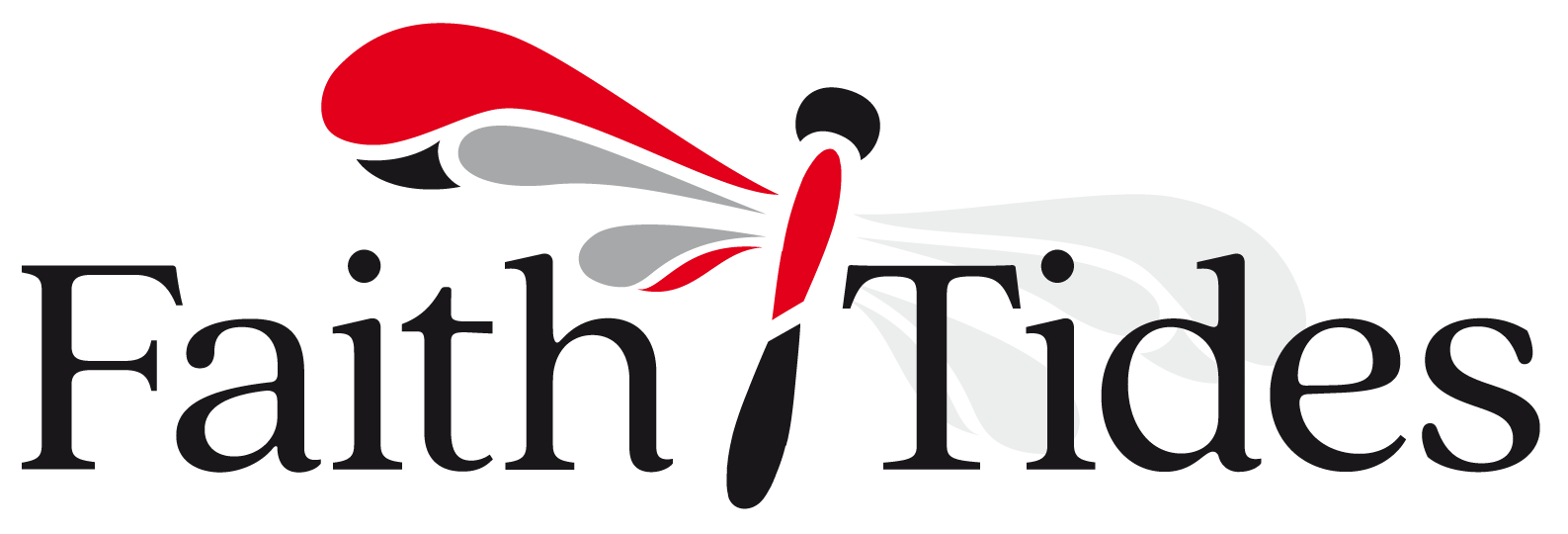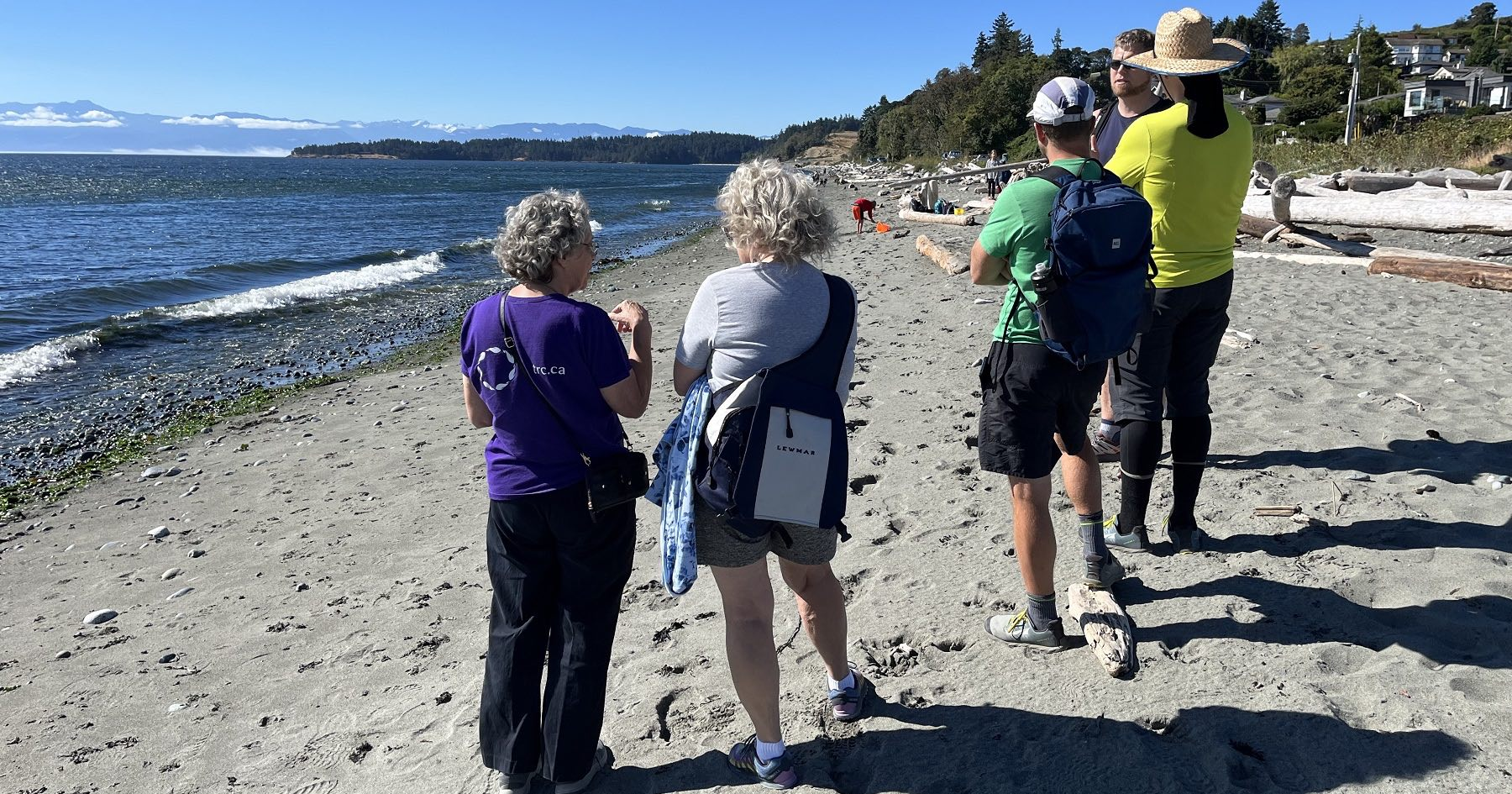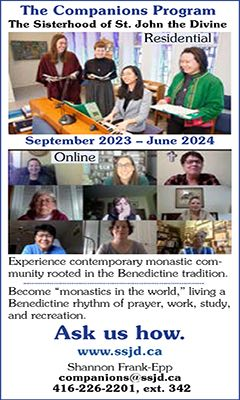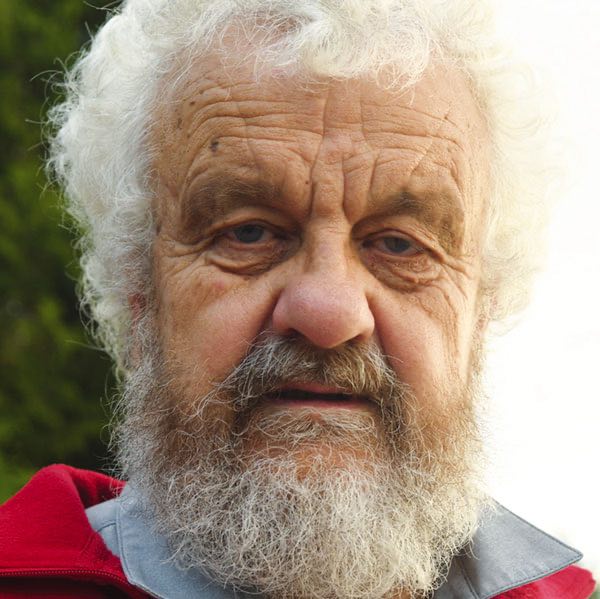What happens when a vision of pilgrimage meets reality? Aches, laughter, sunburn, friendships and more — and above all, learning that brings connection and peace.
The usual pilgrimage is to a holy place, like Jerusalem or Santiago de Compostela. The vision was simple. Let people undertake a pilgrimage through a holy place: creation. Such a pilgrimage can be anywhere at any time, including Vancouver Island now. With eight billion people straining the other forms of life on Earth, let’s use the pilgrimage through creation to reflect on how to allow all forms of life to flourish, including humans. This is the foundation of the Vancouver Island Anthropocene Pilgrimage.
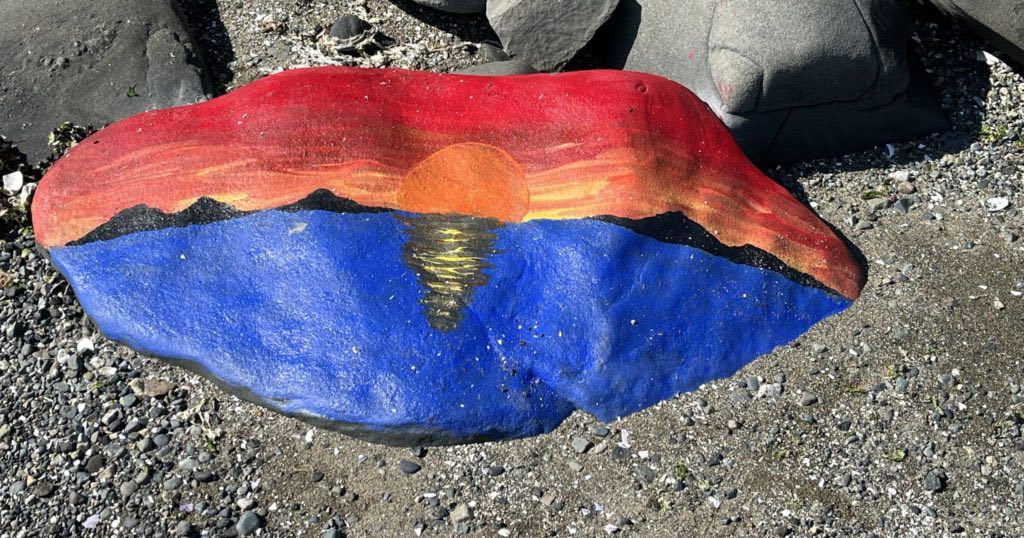
Planning for the Anthropocene Pilgrimage started in 2019 and the original plan was to begin walking in 2020. A group of us, including church members, members of Camino Canada and interested members of the public would walk for a week. Each evening, the parish of the town we stopped in would welcome the pilgrims with supper, a place to sleep in the church and social time. First Nations would teach us how their culture understood the duty of care of creation. The pilgrims and people of the community would learn from each other. COVID-19 arrived in early 2020, the world changed, and the vision evolved but would not die.
By 2022, the organizing group from the Anglican church, Wild church, United church, and Camino Victoria planned an eight-day circular pilgrimage, starting at Christ Church Cathedral, through the Cowichan Valley and then back to Westshore. The route had to be on trails or lightly travelled roads with shoulders, not Highway 1 or busy secondary roads. The ideal day would be 17 to 20 kilometres. The pilgrimage “mule,” our truck, would carry tents, sleeping bags and other heavy equipment for the pilgrims. We would walk in the first week of September, the start of the Season of Creation, when the weather was stable and the wildfire danger rating lower.
Then, more reality: highly infectious variants of COVID-19 meant we should not have large numbers of pilgrims or pilgrims meeting new community groups or sleeping in the church halls. My wife and I got COVID-19 in May, and I was sick with another virus in June and July. We adapted, shortening the pilgrimage from eight to four days. People brought tents or stayed with friends. Sharleen Thompson, my wife, volunteered to cook supper and breakfast each day. Pilgrims who could not walk the full day helped Sharleen to prepare supper each afternoon. Instead of 25 to 100 pilgrims per day, we were happy with the registration of between 10 to 20 people per day.
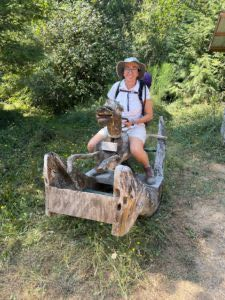
We left St John, Duncan, on Wednesday, Aug. 30 and finished on Saturday, Sept. 3 at St Mary of the Incarnation in Metchosin. Some pilgrims (the strong in spirit and worn of limb, and young children) arranged rides to limit the day walk to half or less of the full route.
Wednesday began with gathering for morning prayer at St John, Duncan, and then driving to the Cowichan Valley Trail. We walked the trail to the Kinsol Trestle over the Koksilah River, a visual highlight. Families with children joined us there, adding youthful curiosity and energy. The natural walking speed of the pilgrims varied, so we gradually formed small groups. As long as we all finished in time for supper, why force people to walk the same pace and route all day? It was hot, peaking at 34°C, and a quick wade or swim in Shawnigan Lake helped us get to Sylvan United Church near Mill Bay. A cold beer at a Mexican restaurant helped me too.
At the church, our tents spread across the yard, we recovered from the walk. We experienced again that preparing food and eating together is a powerful form of communion. That evening Ken Elliot of the Cowichan Nations spoke to us and members of the congregation about his spiritual journey, the teachings he received from his grandmother and aunts about respect for other forms of life and his current work educating children and reintroducing Indigenous plants to our gardens and homes.
Thursday morning, Katherine Brittain, incumbent at Sylvan United Church, led us in a morning service on the first day of the Season of Creation. We walked from the church to the Mill Bay ferry terminal. Part of the walk was along the beach, looking over the ocean to Salt Spring Island, a useful reminder that creation here is as much ocean as land. We took the ferry across Tod Inlet to Brentwood Bay, and then walked to St Stephen, Central Saanich. Some of the pilgrims had to leave the pilgrimage for a funeral and other commitments, but almost all rejoined for the final day. Our small group of pilgrims had a wonderful, intimate supper at the picnic table outside the historic church. As it got dark, we walked through the old church, gathered and cleaned our dishes and then went to bed.

Friday morning, Lon Towstego, incumbent in the Parish of Central Saanich, led us in a morning service. Because the route from St Stephen to Church of the Advent was 25 kilometres along busy roads, we carpooled to the Lochside Trail and followed regional trails the rest of the day. One pilgrim did the 18+ kilometres barefoot. We carpooled from Church of the Advent to our home in Metchosin for supper and a place to camp. Over 20 people shared food, insights and stories. Once again, one of the highlights of a pilgrimage was sharing with people attracted by similar ideals and challenges.
Our final day started with Ingrid Anderson, incumbent at Church of the Advent, leading us in prayer. From there, we walked through the old growth Douglas fir forest at Royal Roads University, along the beach between Esquimalt and Albert Head Lagoon Regional Park and then across Albert Head and through Witty’s Lagoon Regional Park to St Mary of the Incarnation, where Matthew Humphrey of Wild church led our culminating service.
The world is a better place for having more than one flavour of ice cream, and more than one form of pilgrimage and one set of insights. The physical effort of walking and preparing meals helps free us from daily chores and preoccupations to reflect on major issues and meet people in deep, new ways. Consider pilgrimage as a spiritual practice and adventure, and that God supports and loves each person’s insights and experiences.
If you are called to join or help organize a pilgrimage, let’s talk by telephone at 250 888 6376 or email [email protected].
